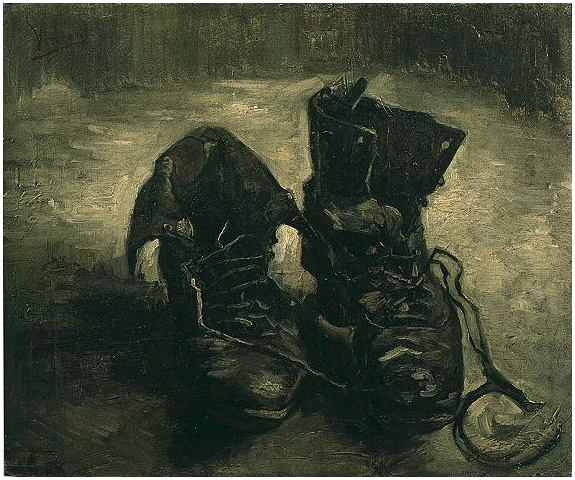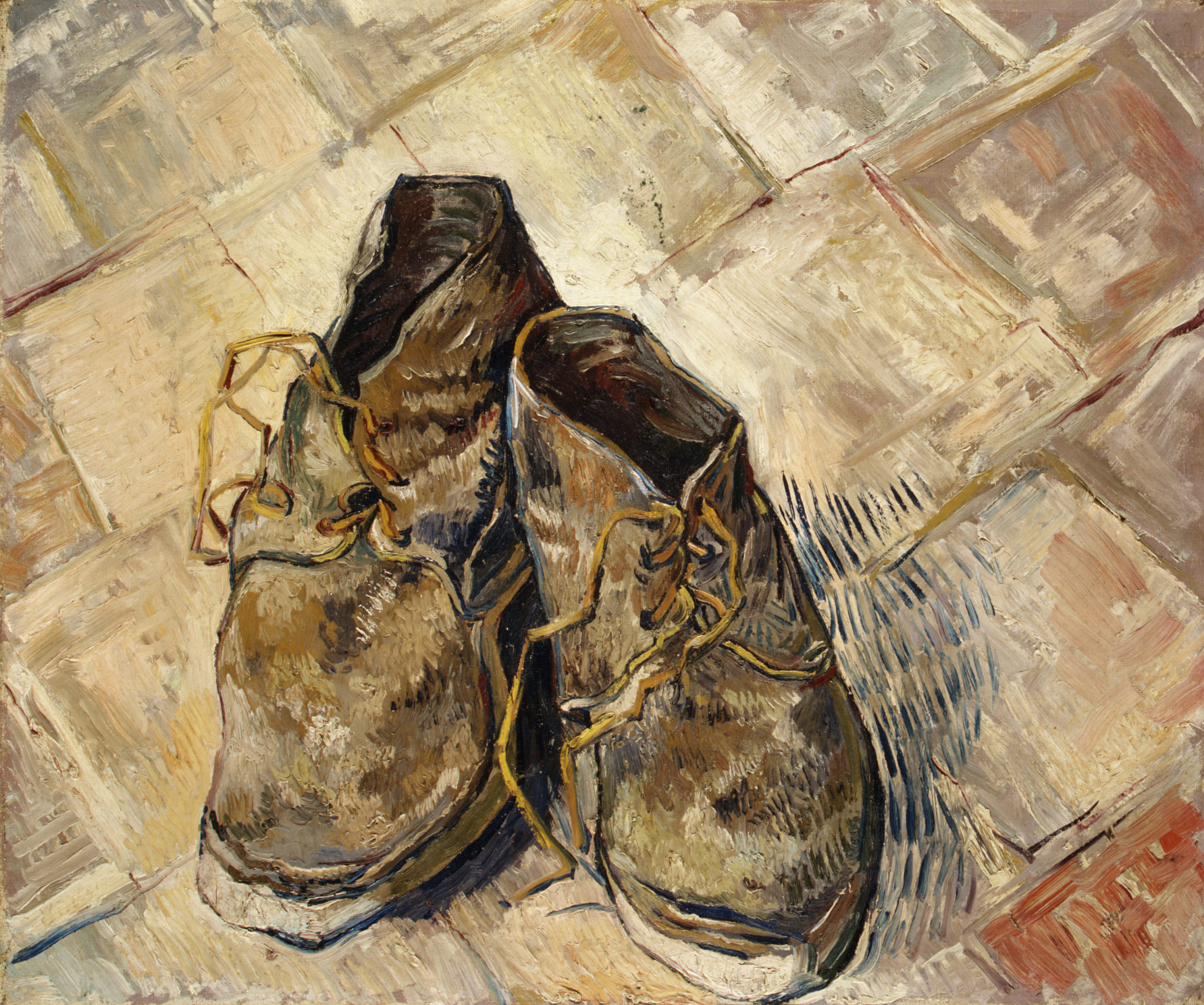Here is one more post to do with Vincent Van Gogh! This post was triggered when I found some interesting information about Van Gogh's painting "A Pair of Shoes". And a friend of mine just told me she was drawing shoes--
Van Gogh was fascinated with shoes. The first pair below he painted in 1886, the next three in 1887.



THhe following pair he painted in 1888.

These shoe paintings have in come for a lot of discussion from several art writers, critics and philosophers. They conjecture that these paintings speak of Van Gogh's sympathy and feeling for the underdog, the peasant or the poor. It is said that these shoes symbolised not just the suffering and poverty, but more the endurance, inner fortitude of the peasant towards their lot--and lent it dignity.
There are other theories to say that all these pairs actually belonged to the artist himself, not the peasants whom he was so fond of depicting in all their ruggedness. [His famous painting of the Potato Eaters and other hundreds of sketches he made of the hardship and grinding poverty of the rural peasant reveal an immense understanding and sensitivity.]
It seems quite reasonable therefore to infer that these boots, shoes and clogs that he painted so often similarly were an attempt to reveal the character of the wearer and his situation.
There is even one more theory, that I find quite quaint, that Van Gogh had a great attachment to one particular pair of shoes--and so he kept painting it.
Be all that as it may, the fact is that Van Gogh himself lived in abject poverty for a large part of his short life. Under these circumstances, he needed to keep finding objects or models which he could use for his paintings. He found everything around him thus served a purpose--of course, his eye found great beauty, colour and character wherever he looked.
Tell me what do you see?
To me everything about these shoes seems to speak--their well-worn lived-in look, weathered appearance and ruggedness greet you at once. And I love looking at them.
They are full of presence.















